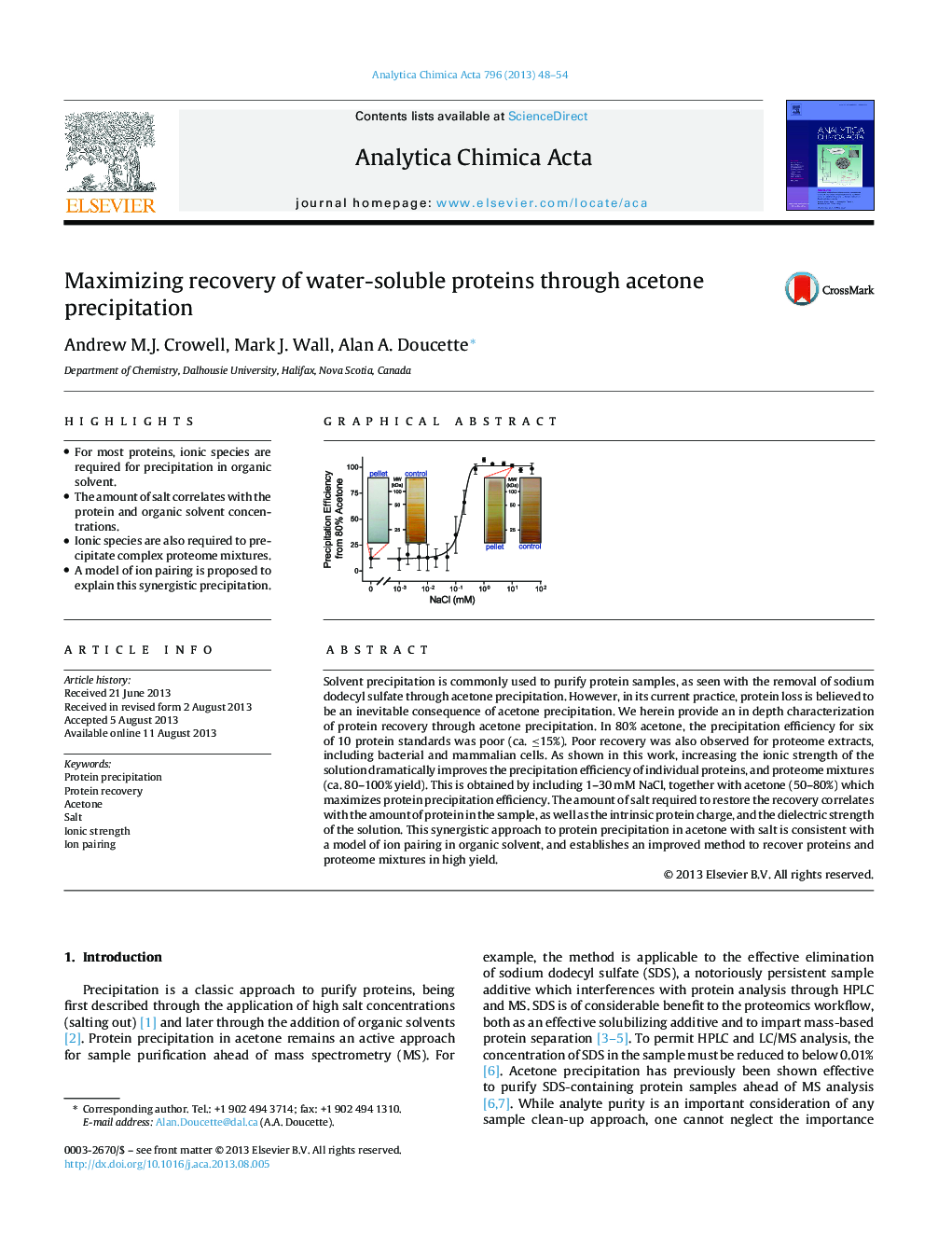| کد مقاله | کد نشریه | سال انتشار | مقاله انگلیسی | نسخه تمام متن |
|---|---|---|---|---|
| 1165581 | 1491036 | 2013 | 7 صفحه PDF | دانلود رایگان |

• For most proteins, ionic species are required for precipitation in organic solvent.
• The amount of salt correlates with the protein and organic solvent concentrations.
• Ionic species are also required to precipitate complex proteome mixtures.
• A model of ion pairing is proposed to explain this synergistic precipitation.
Solvent precipitation is commonly used to purify protein samples, as seen with the removal of sodium dodecyl sulfate through acetone precipitation. However, in its current practice, protein loss is believed to be an inevitable consequence of acetone precipitation. We herein provide an in depth characterization of protein recovery through acetone precipitation. In 80% acetone, the precipitation efficiency for six of 10 protein standards was poor (ca. ≤15%). Poor recovery was also observed for proteome extracts, including bacterial and mammalian cells. As shown in this work, increasing the ionic strength of the solution dramatically improves the precipitation efficiency of individual proteins, and proteome mixtures (ca. 80–100% yield). This is obtained by including 1–30 mM NaCl, together with acetone (50–80%) which maximizes protein precipitation efficiency. The amount of salt required to restore the recovery correlates with the amount of protein in the sample, as well as the intrinsic protein charge, and the dielectric strength of the solution. This synergistic approach to protein precipitation in acetone with salt is consistent with a model of ion pairing in organic solvent, and establishes an improved method to recover proteins and proteome mixtures in high yield.
Figure optionsDownload as PowerPoint slide
Journal: Analytica Chimica Acta - Volume 796, 24 September 2013, Pages 48–54